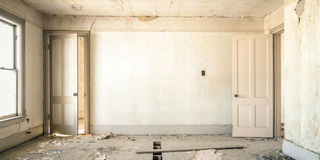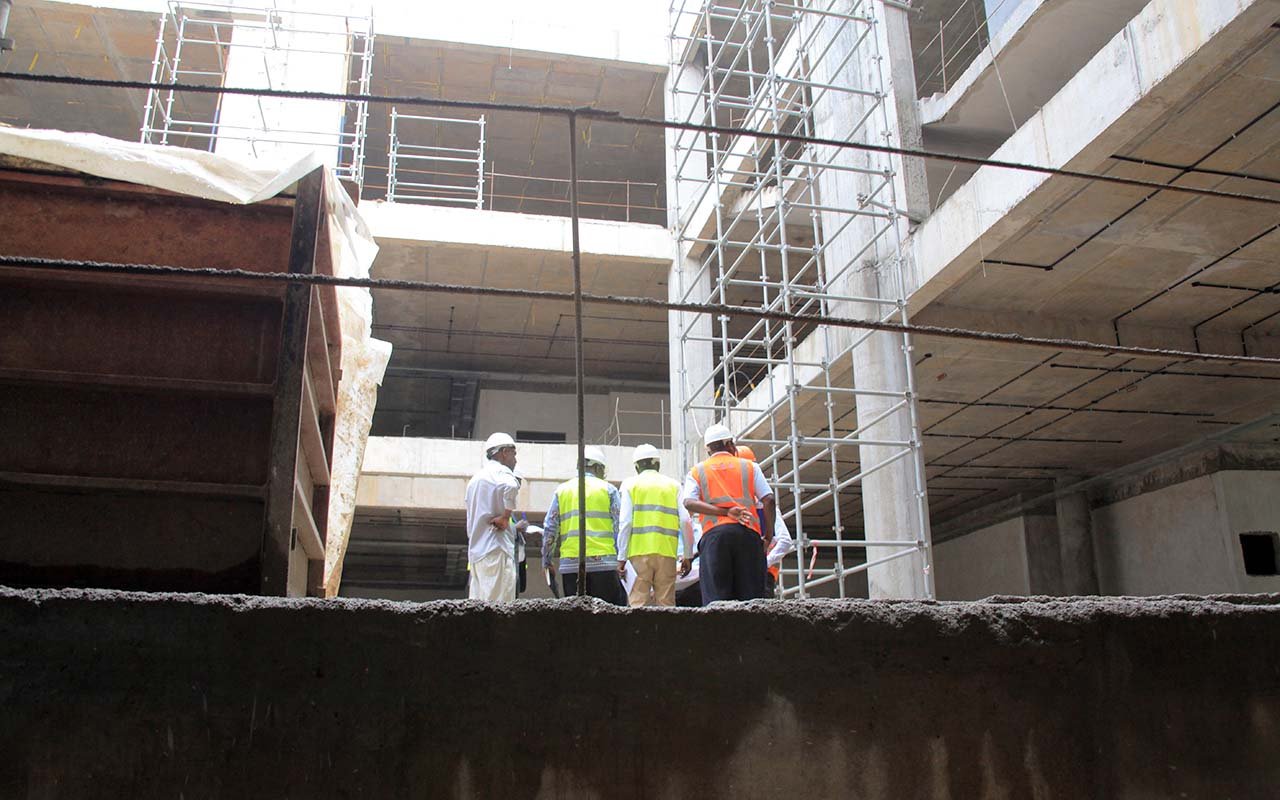Prime
Dealing with apartment defects: A guide for owners and buyers

Each building’s experience with defects will differ, some may be cosmetic and others structural.
What you need to know:
All stakeholders must stop playing the blame game. All parties involved will have to take some pain; regulators, developers, builders, subcontractors, consultants, certifiers, insurers, manufacturers, suppliers and owners.
If you own an apartment or are thinking of buying one chances are you are concerned by the recent news about building quality. There have been complaints about the shoddy work done by property developers. While most buildings will not have such serious defects, some do have significant problems, and owners must get these fixed so they are not a health and safety risk.
Even if the defect does not affect their apartment, this is often the shared responsibility of all owners in the building. They must have access to good guidance on dealing with defects in shared properties, but this is not always easy to find. To help owners, we have put together a guide to rectifying defects.
This how-to guide takes current and potential owners through the steps of identifying and rectifying defects, with links to helpful resources. It includes advice on getting a defect report, whether the developer or builder might be responsible for fixing the issue, how to choose and manage building experts, and how to manage communication with owners and workers.
So what key things should owners know?
Each building’s experience with defects will differ. But there are some key principles owners should always keep in mind, these underpin all the advice in our guide.
Ignorance is not bliss
As an owner, you are automatically a member of the owners corporation/body corporate. This means you have a legal responsibility to maintain and repair the common property, including dealing with defects.
Information is power
Gather all the information you can when investigating defects. For buyers, a good strata report is essential. For owners of new buildings, getting a professional defects report is particularly important. It is worth the cost.
Focus on potential fire, waterproofing or structural issues. These defects can be hard to see but expensive to fix.
They also have major impacts on health and safety. Many are unaware that getting building inspectors to inspect their homes can save them a lot of heartache at the end of the day. By getting these home inspection professionals to conduct defect checks, owners will be able to identify problems early and get them rectified before they escalate. They have the trained eye to identify faults disguised by cosmetic improvements, which may be missed by the laymen. Most architects and surveyors double up as building inspectors. In addition, some home inspection experts may even estimate the cost of remedying defects found.
The early bird catches the worm
Construction defects refer to any imperfections, insufficiencies, or defects in the materials, design, or workmanship used in constructing a structure. These defects can hurt the overall structural integrity and functionality of a building, ranging from minor aesthetic drawbacks to severe structural issues.
Neglecting construction defects can lead to significant issues such as safety hazards or costly repairs, which can cause a decrease in the value of the property. This is a pressing issue, particularly in multi-residential buildings throughout the country. Therefore, it is crucial to prevent and manage construction defects.
To prevent the impact of construction defects, a comprehensive defect management plan is essential. This plan should involve regular inspections and evaluations, a proper reporting system, and a well-defined protocol to address and correct any problems that arise.
A prompt response to construction defects can prevent these problems from becoming more severe and costly in the future.
To successfully manage construction defects, an organised and methodical approach is necessary. Utilising specialised software to streamline reporting procedures can help to identify patterns in defect distribution, monitor the progress of resolutions, and reduce the cost of rework.
By implementing a comprehensive defect management plan and utilising defect management software, construction companies can manage defects efficiently, reduce the risk of costly repairs, and avoid disputes.
Types of construction defects
When it comes to construction, there are a multitude of potential defects that can arise over the course of a project. Some common examples of construction defects include problems with the foundation, structural issues, and leaks.
However, it is important to note that not all construction defects are structural in nature. For example, defects in the finishing or cosmetic aspects of a building can also be considered construction defects.
While it is understandable to be concerned if you are facing a construction defect, keep in mind that there are often ways to address or remedy the problem. With the help of knowledgeable professionals and a proactive approach, you can overcome any construction-related obstacle and move forward with your project.
Structural defects
Structural defects are some of the most severe types of construction defects as they can compromise the stability and safety of a property. Some common examples of structural defects include:

Debris scattered across a balcony in the aftermath of a ceiling collapse. PHOTOs/Tony Mushoborozi.
Foundation issues
Cracks or unevenness in the foundation can lead to instability, sinking, or even collapse of the property.
Framing problems
Improper installation of framing members or lack of proper support can cause structural deformations or failure.
Roof problems
Leaks or poor installation of roofing materials can lead to water damage, mold, and rot, and even compromise the structural integrity of the roof.
You can never start looking for and dealing with defects too early. Be aware of time limits on building warranties. For minor defects, you have two years to start the process of getting the builder or developer to fix the defect. If your building is outside the warranty period, you may have to fund rectification yourself.
Sharing is caring
Make sure you report defects to people who need to know. This will include your owners’ association and individual owners. Besides the legal steps, aggrieved homebuyers should band together.
Contact neighbours who have similar difficulties in getting their home defects rectified. You may have more in common than you think. There is power in numbers, and you can share tasks to lighten the workload.
The main objective is to convince the property developer that you are serious about getting the defects rectified properly. Keeping good records is also important. Records are needed in case there are disputes and to show future buyers the building is well-maintained.
Look after yourself
Dealing with defects can be financially and emotionally draining. Conflict can occur, and collective decision-making can feel very slow. To help navigate the process, you want the best experts by your side. They include lawyers, building specialists, association managers and project managers. And always get a second opinion if in doubt.
What else can be done to improve the situation?
One way governments can help owners who face such issues in the future is to make it easier for them to get the information they need to deal with defects effectively and efficiently.
Currently, property buyers and owners suffer from what economists call “information asymmetry”, they do not have access to all the information they need to make informed decisions about building quality.
For example, developers might not give new owners all the details about how their building was built, what materials were used, or which builders and tradespeople worked on it.
Developers should be required to give owners better information, as well as taking more responsibility for fixing defects. Owners associations should be encouraged to keep building records on defects up-to-date and make this information available to prospective buyers and relevant authorities.
And governments should support further professionalisation of the strata and building management industries to ensure owners have the best possible support to navigate defects issues and care for their buildings.
Build confidence and end the blame game
The crop of building defects we see today are a direct result of negligent regulation by all the relevant authorities over the past two decades. Clearly, they all have a legal and moral duty to coordinate and contribute to a programme to manage the risks and economic damage this has created.
All the evidence points to a long-term failure to heed repeated warnings about the dangers. Regulators should be more vigilant in their supervision of the building industry and building materials supply industry.
All stakeholders must stop playing the blame game. All parties involved will have to take some pain; regulators, developers, builders, subcontractors, consultants, certifiers, insurers, aluminium panel manufacturers, suppliers and owners. Only governments can broker a solution as it will require legislation and an allocation of responsibility for fault.
The alternative will probably be a huge number of individual legal cases and a rash of owner bankruptcies, which may well leave the guilty parties untouched. Citizens, built environment professionals and government must act to prevent the common problem of inadequate construction generally. The responsible government agencies and professional bodies must create awareness of the need to obtain planning permission before building. They must also insist on the need to engage professionals in the construction of buildings.
The government should also ensure that capable and qualified professionals are employed to ensure the implementation of building code regulations. This would go a long way towards effective and efficient building development in the entire country.
Equally important is the provision of modern facilities such as drones and GPS for effective monitoring and enforcement of building regulations. Punishment such as heavy fines, forfeiture of property and jail terms should be meted out to any professionals or property owners who contravene building control regulations or engage in unethical practices that could lead to the destruction of buildings.
Solution
The government should also ensure that capable and qualified professionals are employed to ensure the implementation of building code regulations. This would go a long way towards effective and efficient building development in the entire country.
Source:theconversation.com





